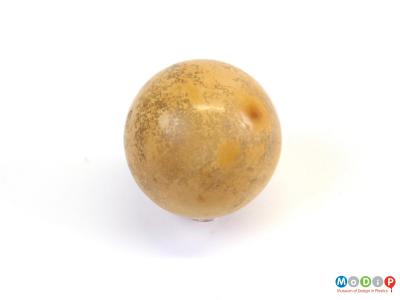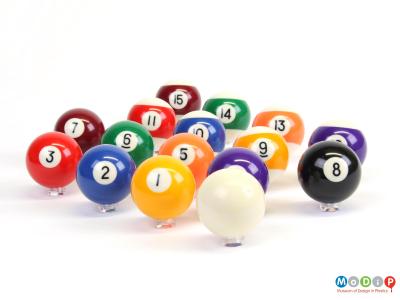Plastics have encouraged more people to make sport a part of their day than ever before. Most plastics are cheaper than natural materials and their production techniques more automated and faster. Thus they have made sporting equipment cheaper and therefore more affordable.
Some early man-made plastics were developed specifically as cheaper substitutes for natural materials as in the case of the snooker ball (1). They were formerly made from elephants’ tusks, one tusk yielding only eight balls. This example is made of Parkesine, a form of cellulose nitrate, the trade name for the very first man-made plastic. Plastics now make it possible for snooker balls to be made to suit the ability and pocket of the player: these economy pool balls (2) are made of polyester and the higher quality snooker balls (3) of cast phenolic. At £52 the set, they cost three times as much as the economy balls.
Horse-riding is another sport that plastics have helped to make affordable. In particular it has enabled much wider engagement in dressage. Such saddles can cost hundreds if not thousands of pounds but the Rhinegold synthetic saddle (4) retails at less than £100. The use of a soft slightly spongy plastic for this saddle is not only cheaper, it also has greater inbuilt comfort for the less experienced rider with a ‘sure-grip’ saddle and leg panels.
Equipment made from plastics tends to require less maintenance than that made from traditional materials. It is no longer necessary to keep rackets in a press as was necessary when they were made of wood. The tennis racket shown (5) is made of carbon fibre and MicroGel, a form of silicon exclusive to its manufacturer, Head. MicroGel creates a honeycomb structure around the stiff carbon fibres which deforms and compresses upon ball impact, uniformly absorbing and distributing the impact load around the frame lessoning the likelihood of the player developing tennis elbow. Carbon fibre rackets can last for years without noticeable fatigue.





